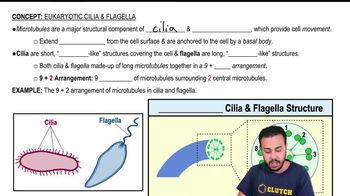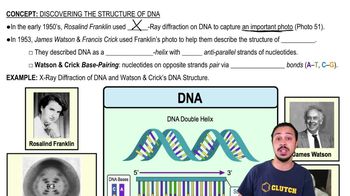Here are the essential concepts you must grasp in order to answer the question correctly.
Morphological Differences
Balantidium coli and Entamoeba histolytica exhibit distinct morphological characteristics under a microscope. B. coli is a large ciliated protozoan, typically oval or spherical, with a prominent macronucleus and cilia covering its surface, which aids in its motility. In contrast, E. histolytica is smaller, amoeboid in shape, and lacks cilia, making it essential to recognize these differences for accurate identification.
Recommended video:
Bacterial Cell Morphology & Arrangements
Cilia Function
Cilia are hair-like structures that cover the surface of certain protozoa, including Balantidium coli. These structures play a crucial role in locomotion and feeding, allowing the organism to move through its environment and capture food particles. Understanding the function and presence of cilia is vital for distinguishing B. coli from other protozoa, such as E. histolytica, which does not possess cilia.
Recommended video:
Eukaryotic Cilia & Flagella
Nuclear Structure
The nuclear structure of protozoa can provide significant clues for identification. Balantidium coli has a large, kidney-shaped macronucleus, which is a defining feature of its cellular organization. In contrast, Entamoeba histolytica has a smaller, spherical nucleus. Recognizing these nuclear differences is essential for microbiologists when differentiating between these two protozoan pathogens.
Recommended video:
Discovering the Structure of DNA
 Verified step by step guidance
Verified step by step guidance Verified video answer for a similar problem:
Verified video answer for a similar problem:



 5:09m
5:09m